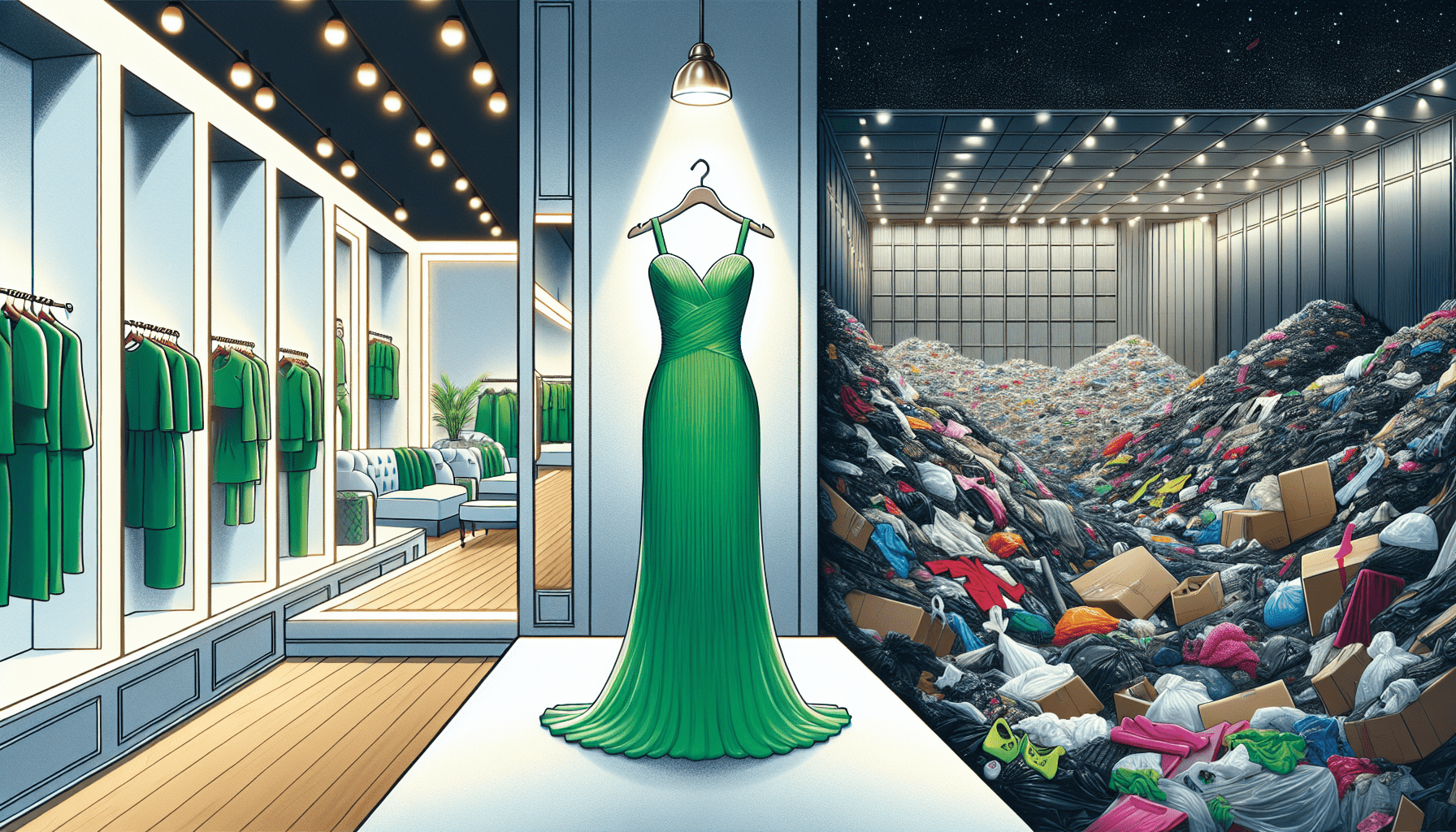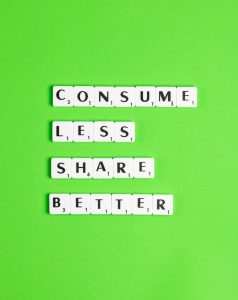In recent times, there’s been a significant uptick in brands claiming to be “eco-friendly,” especially within the fashion industry. But how do we sift through these claims to identify genuine sustainability efforts versus mere greenwashing? In our article, “How Can I Identify Greenwashing In Fashion,” we break down the telltale signs and strategies that can help us become more informed consumers. We dive into what greenwashing looks like, how to scrutinize labels and marketing lingo, and the importance of doing our own research. By demystifying these tactics, we can better navigate our choices and contribute to more authentic sustainability in our wardrobes. How can we identify greenwashing in fashion? It’s a question more of us are asking as we become increasingly conscious of our environmental footprint. The fashion industry is notorious for its impact on the environment, and as consumers, we’re now more vigilant about the brands we support. However, not all brands are as green as they claim to be, and that’s where greenwashing comes into play.
What is Greenwashing?
Greenwashing is a tactic used by companies to appear more environmentally responsible than they actually are. It involves making misleading claims about the environmental benefits of a product or company practices. In the fashion industry, greenwashing can take many forms, from vague sustainability claims to outright lies.
Why is Greenwashing a Problem?
Greenwashing misleads consumers who want to make eco-friendly choices, prevents genuinely sustainable brands from getting the recognition they deserve, and ultimately hampers efforts to protect the environment. When we fall for greenwashing, we’re often supporting the same harmful practices that we’re trying to avoid.
Common Forms of Greenwashing in Fashion
To better understand how greenwashing is perpetrated, let’s look at some of the most common forms it takes in the fashion industry.
1. Vague Claims
Terms like “eco-friendly,” “green,” and “sustainable” are often used without any solid evidence to back them up. These terms are ambiguous and can mean different things to different people.
Example:
| Brand Statement | Why It’s Greenwashing |
|---|---|
| “Our clothes are made with eco-friendly materials.” | What materials? How are they sourced? This statement needs specifics. |
2. Irrelevant Claims
Brands sometimes highlight a single green attribute of a product while ignoring other significant environmental impacts. This can be misleading.
Example:
| Brand Statement | Why It’s Greenwashing |
|---|---|
| “Our packaging is 100% recyclable.” | But what about the product’s overall environmental footprint? |
3. Lack of Proof
Some brands make bold sustainability claims but provide no proof or third-party verification to support their assertions.
Example:
| Brand Statement | Why It’s Greenwashing |
|---|---|
| “We’ve reduced our carbon footprint.” | Where is the data? Any third-party audits or certifications? |
4. Hidden Trade-Offs
This form focuses on a single green attribute while downplaying other environmental issues.
Example:
| Brand Statement | Why It’s Greenwashing |
|---|---|
| “Organic cotton T-shirts” | They might be organic, but how much water was used in their production? |
5. Lesser of Two Evils
Some brands promote a green product within a traditionally harmful category.
Example:
| Brand Statement | Why It’s Greenwashing |
|---|---|
| “Eco-friendly chemical dyes” | Dyes might be less harmful than others, but the process is still not truly eco-friendly. |
6. False Labels
Certain certifications can be misleading if the criteria are either too lenient or not enforced properly. Be cautious of labels that aren’t verified by a third party.
Example:
| Brand Statement | Why It’s Greenwashing |
|---|---|
| “Certified Green by XYZ” | Who is XYZ? What are their standards? |

How to Identify and Avoid Greenwashing
Navigating through greenwashing can be tricky, but it’s not impossible. Here are some tips to help us make more informed choices.
1. Scrutinize Labels and Certifications
Look for reputable certifications such as Global Organic Textile Standard (GOTS), Fair Trade, and OEKO-TEX Standard 100. These certifications come with stringent standards and regular inspections.
| Certification | What It Means |
|---|---|
| GOTS | Ensures organic status of textiles, from harvesting to labeling. |
| Fair Trade | Focuses on fair wages and working conditions for farmers and workers. |
| OEKO-TEX Standard 100 | Ensures products are free from harmful chemicals. |
2. Be Skeptical of Vague Claims
If the claims are too good to be true, they probably are. Be wary of vaguely defined terms like “green” or “eco-friendly.” Always look for specifics.
3. Research the Company’s Overall Sustainability
A genuinely sustainable company will have multiple initiatives in place that address various aspects of environmental and social responsibilities. Check out their website for detailed sustainability reports and third-party audits.
4. Check for Third-Party Verification
Third-party audits provide an unbiased review of a company’s sustainability claims. Look for companies that are transparent about their audits and are willing to share the results.
5. Transparency is Key
A brand that is genuinely committed to sustainability will be transparent about its practices. They should be able to provide information about:
- Raw material sourcing
- Manufacturing processes
- Labor conditions
- Carbon footprint
- Recycling programs
6. Educate Ourselves
One of the best ways to combat greenwashing is to educate ourselves. Familiarize ourselves with common sustainable practices and certifications so that we can make informed choices.
Real-Life Examples of Greenwashing
Here are some real-life examples to help us better understand how greenwashing operates in the fashion industry.
Example 1: Fast-Fashion Brands
Fast fashion brands often launch “sustainable” collections while their overall business model remains environmentally destructive.
Why It’s Greenwashing: These collections are usually a tiny fraction of their overall production and don’t adequately address the massive waste and overproduction issues inherent in fast fashion.
Example 2: Recyclable Packaging Claims
A brand may tout recyclable packaging while ignoring the environmental impact of the product itself, such as excessive water use or harmful dyes.
Why It’s Greenwashing: It distracts from the more significant environmental issues associated with their products.
Example 3: Biodegradable Fabrics
Some brands claim their products are made from biodegradable fabrics, but don’t provide details about the conditions required for these fabrics to degrade naturally.
Why It’s Greenwashing: Biodegradable fabrics require specific conditions to degrade, which may not be available in most landfills.

How Some Brands are Getting It Right
While greenwashing is prevalent, some brands are genuinely committed to sustainable practices. Here’s how they stand out.
Example 1: Patagonia
Patagonia is a brand that has consistently demonstrated a commitment to sustainability through initiatives like environmental grants, ethical manufacturing, and transparent reporting.
Example 2: Eileen Fisher
Eileen Fisher focuses on organic and recycled materials, fair labor practices, and an innovative take-back program where customers can return used clothing for recycling or reuse.
Example 3: Stella McCartney
Stella McCartney’s brand emphasizes eco-friendly materials, cruelty-free practices, and transparent sustainability reporting.
Conclusion
Identifying greenwashing in fashion can be challenging, but by being more critical of labels, claims, and certifications, we can make better choices. Transparency, third-party verification, and educating ourselves are key to navigating the often murky waters of sustainability claims. Let’s empower ourselves to support genuinely sustainable brands and drive meaningful change in the fashion industry.
By staying informed and vigilant, we’ll be better equipped to discern genuine sustainability from mere greenwashing, ensuring that our choices contribute positively to the planet.



